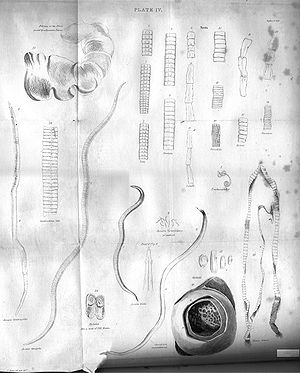It is important to check your dog’s poop on a regular basis. Doing so can help you identify any issues with your dog’s health. If you find small white worms in your dog’s poop, it is a sign that your dog has tapeworms in their intestines. Your dog will also leave tapeworm larvae in your home; they show up as small white specks that look similar to grains of rice, and can be found on your dog’s bedding and any furniture he sits on. Your dog may also scratch or lick his anus, or scoot on the floor due to the irritation from the tapeworms. While tapeworms are not something you want your dog to have to deal with, they can be easily treated if you catch the infestation in its earliest stages.
How Are Tapeworms Contracted?
Tapeworm larvae are actually passed to animals through the bites of mosquitos. Your dog can also get tapeworms from eating an animal that has been infected with them. If you allow your dog to hunt in the woods, or catch small game such as rabbits and squirrels that enter your yard, it’s a very likely possibility that your dog will get tapeworms. Your dog can also become infected by contact with the feces of another dog that has tapeworms. Tapeworms can grow up to eight inches in length, and are then passed from your dog’s body through their stool.
How Can Tapeworms Be Treated?
There are several methods of treatment for tapeworms. You can contact your vet for assistance, but if you already know your dog has tapeworms, there is no need for a costly office visit, lab tests and prescriptions from your vet. You can safely treat a tapeworm infestation at home with a natural remedy. The best at-home remedy is Tape-eze. Tape-eze not only kills existing worms, it also prevents a re-infestation, and can be safely used monthly to protect your dog’s digestive system from these nasty intruders. Tape-eze is made of all-natural ingredients and is deemed safe for use in all breeds of dogs. It is also much less expensive than other tapeworm treatments and preventatives. It’s also easy to administer; simply put a few drops into your dog’s food once per week, and he’ll be free of tapeworms in just a few days.

